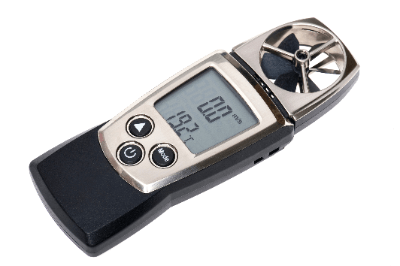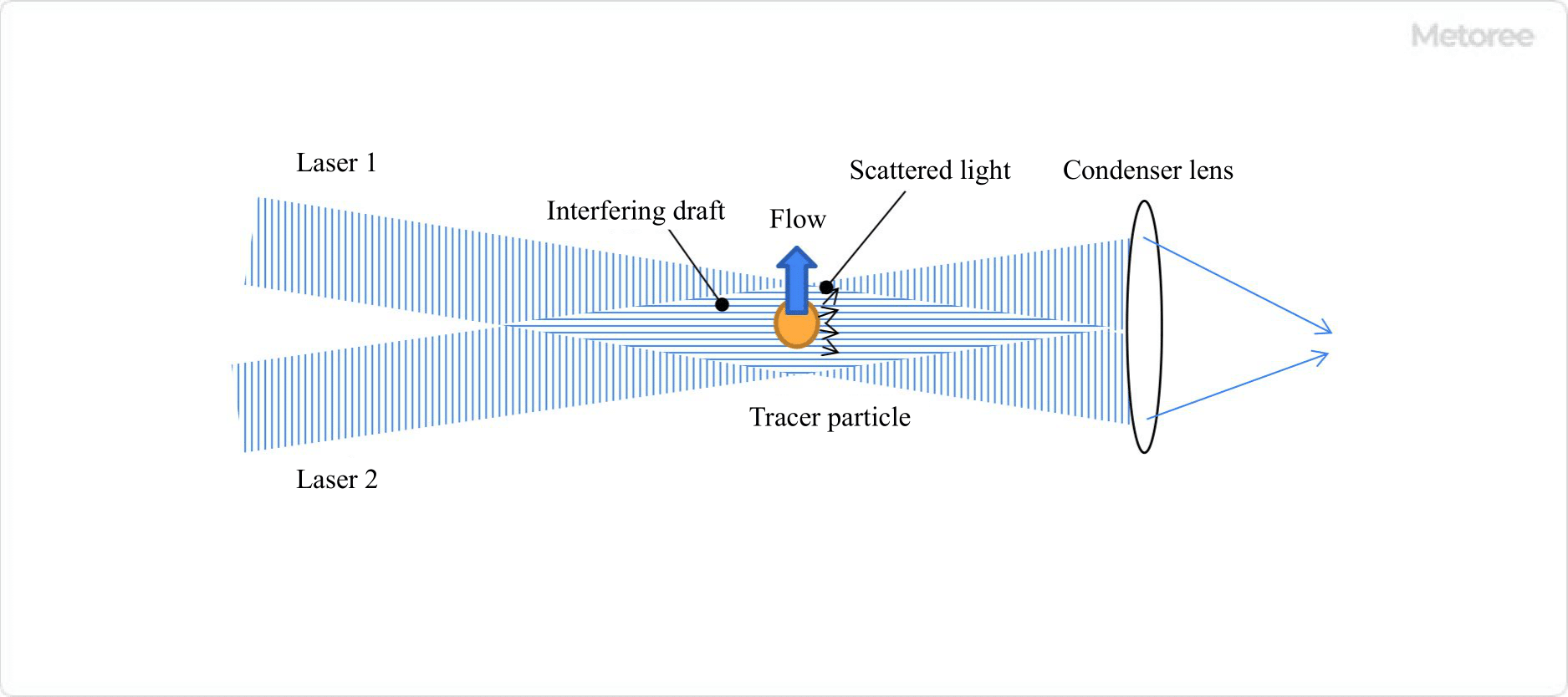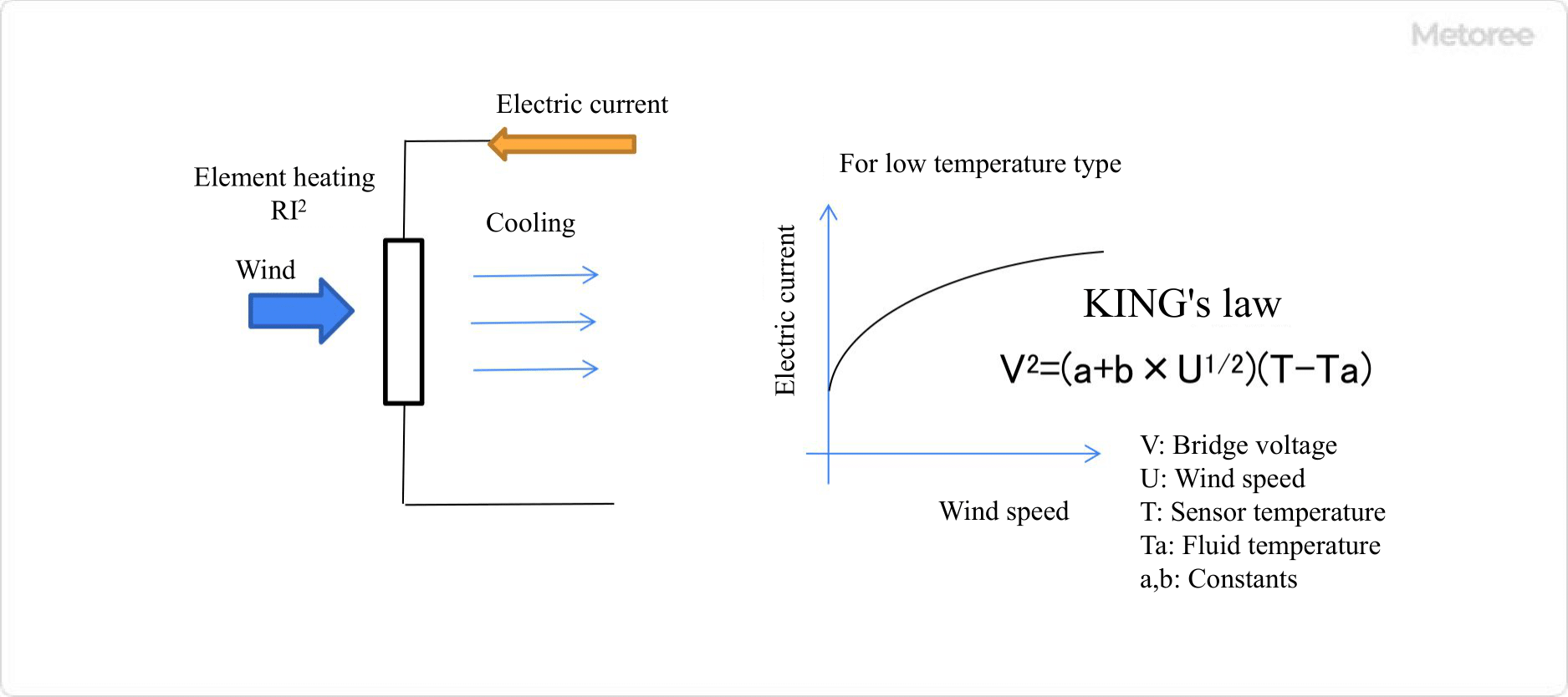What Is a Compact Anemometer?
 A compact anemometer is a type of anemometer that measures and digitally displays the speed of the wind for purposes such as environmental measurement in manufacturing plants and laboratories, safety control, and building management.
A compact anemometer is a type of anemometer that measures and digitally displays the speed of the wind for purposes such as environmental measurement in manufacturing plants and laboratories, safety control, and building management.
With a wind speed resolution of 0.01 m/s or better, the breeze anemometer is capable of measuring very low wind speeds and is often used for measurements in confined spaces or indoors.
There are various types of anemometers depending on size and functions, such as hot-wire type anemometers that can also measure airflow and temperature, those with a memory function that can be connected to a PC or printer, those with a probe extension rod, those with a duct input function, those for high-temperature measurement, and even wireless anemometers.
The appropriate device should be selected based on the application and indoor environment.
Uses of Compact Anemometers
Compact anemometers have traditionally been used to evaluate comfort by testing indoor ventilation functions. Examples of applications are as follows:
- Measurement of wind velocity in clean rooms and clean benches
- Draft chambers, etc.
- Air environment measurement inside residences and office buildings
- Management of air velocity inside buildings and factories
- Maintenance and capacity testing of air conditioning equipment
- Indoor environment surveys at manufacturing sites
- Performance testing of HEPA filters, etc.
- Measurement of indoor convection currents
- Valves, ventilation fans, ventilators, etc.
Principle of Compact Anemometers
Anemometers include pitot tube anemometers, which can measure high velocities; vane anemometers, which are less susceptible to temperature changes; thermal anemometers, which measure wind velocity from heat loss in metal wires; and ultrasonic anemometers, which use ultrasonic waves. In the low wind speed range, laser doppler anemometers and thermal anemometers are used as compact anemometers.

Figure 1. Principle of laser doppler anemometer
In a laser-doppler anemometer, two laser beams with different optical paths interfere with each other to create interference fringes. When the tracer particles flow through the fluid and pass through these interference fringes, it will change the intensity of the scattered light from the tracer particles.
This intensity change is read to detect the doppler shift frequency and determine the velocity of the particles. Since the flow of liquid or gas can be observed without contact, the flow is not disturbed. The high time resolution enables measurement of low wind velocity.

Figure 2. Principle of hot-wire anemometer
The hot-wire anemometer determines wind velocity by applying the heat loss of a metal wire. A heated metal wire (such as platinum is used for the heated wire) is embedded inside the probe.
When the probe is exposed to wind, the temperature of the metal wire is cooled by the wind, and the amount of this cooled heat is the amount of heat dissipated. The stronger the wind, the lower the temperature of the metal wire.
The wind speed is obtained from the relationship between the amount of wind and the amount of heat dissipated. This is based on an approximate formula using King’s formula, which states that the amount of heat lost is proportional to one-half the wind speed to the power of one-half.
How to Select a Compact Anemometer
Laser doppler anemometers are difficult to use industrially because they require tracer particles and are expensive. However, they are non-contact and have the potential to measure things that other anemometers cannot. It is good to consider when you want to know more detailed flow, such as in fluid research.
On the other hand, hot-wire anemometers are widely available in the market and can be easily handled.
There are different types, such as portable types and models that can measure multiple points, so it is important to select the one that best suits your application.
Other Information on Compact Anemometers
Calibration of Compact Anemometers
It is important to calibrate an anemometer frequently because it is difficult to measure the anemometer in the low wind speed range. Especially for hot-wire anemometers, even a tiny speck of dust on the probe can cause measurement inaccuracy.
Wind speeds in the range of 0.05 m/s to 1.5 m/s are classified as fine wind speeds, and those in the range of 1.3 m/s to 40 m/s are classified as gas flow velocities. Generally, if you try to produce very slow wind velocity, the flow becomes unstable and calibration becomes difficult.
Therefore, calibration facilities for low wind speeds use a traveling cart that moves the anemometer into stationary gas. Since this method requires the air to come to a complete stop, the facility is placed in an underground tunnel (8 m deep from the ground, annual temperature variation within ±2°C around 20°C) to avoid the effects of natural convection, and calibration is performed over a sufficient measurement time.